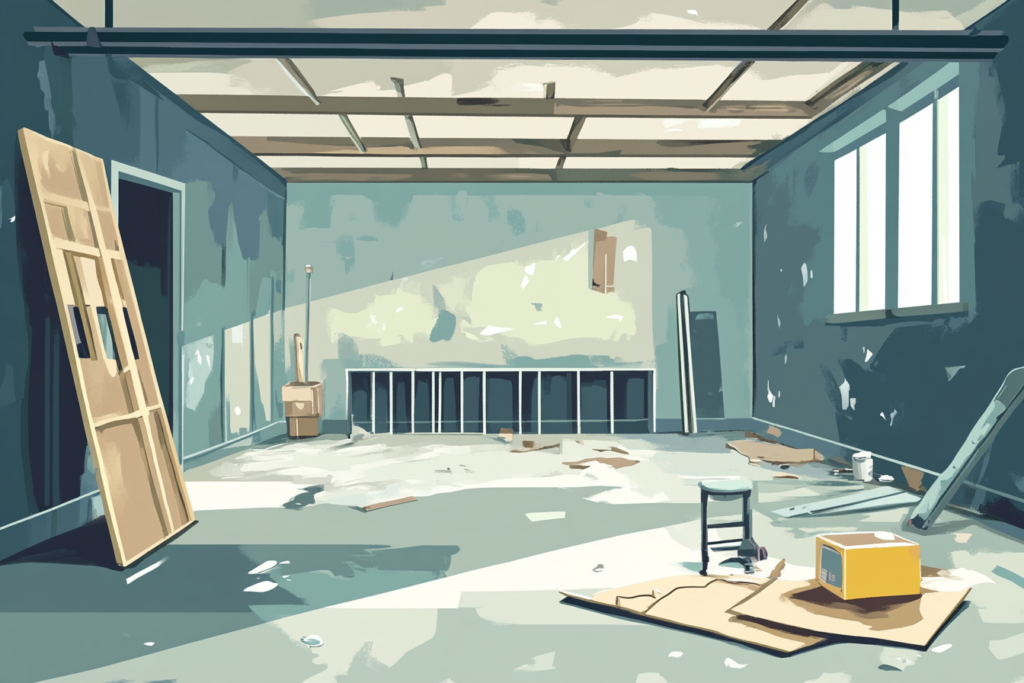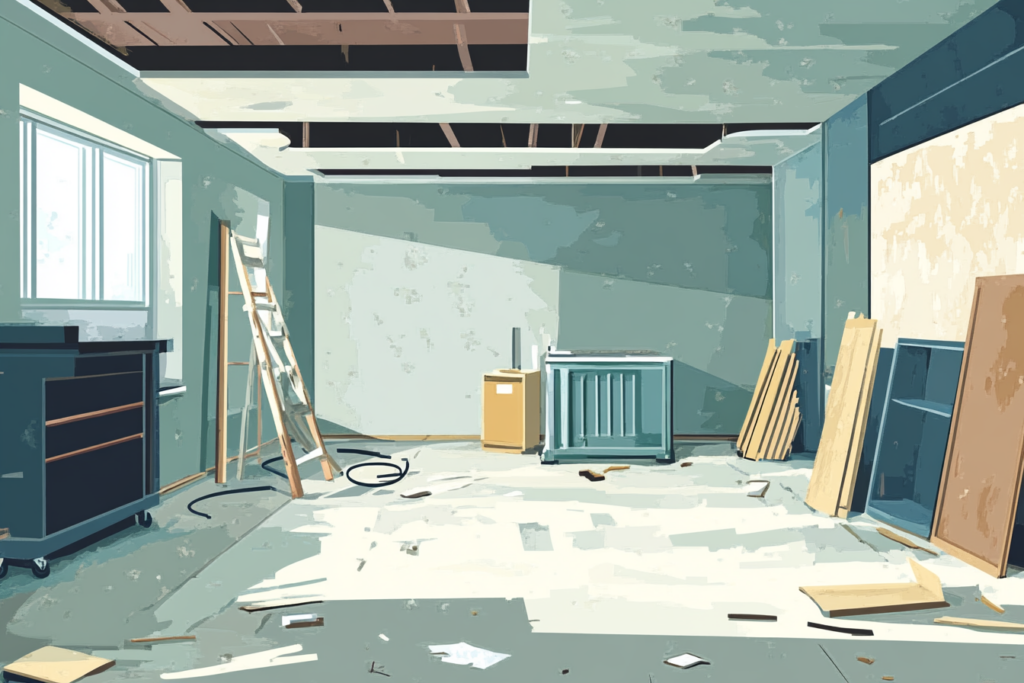Remember being afraid to enter your grandparents’ dark, cold basement? When you turned on the single light bulb hanging from the ceiling, all you saw were dusty boxes, spiderwebs, and, depending on your imagination, a shadowy monster or two.
Basements reminiscent of a Stephen King story are one of yesteryear’s house horrors. Today, people are transforming basements into their dream living areas—from immersive home theaters and spacious family rooms to spare bedrooms and sports bars—while adding value to their homes.
Complete basement conversions are among the top four interior remodels that positively impact your return on investment, with over 85 percent of the remodeling project cost recovered upon the home’s sale. In addition, with superior materials and advanced technology that ensure the quality and durability of basement renovations, there’s no reason a homeowner wouldn’t consider renovating their basement. It’s a win-win situation for them, their family, and the value of their most prized asset–their home.
Before Getting Started on Remodeling Your Basement–Read This!

Waterproof the Basement
A basement’s worst enemy isn’t time. It’s moisture. Do you know how well your basement is sealed against moisture? Waterproofing outside your basement prevents water from seeping into the foundation walls and causing severe structural damage. Exterior basement sealants are long-lasting polymer-based compounds not affected by soil pH levels. They can be applied directly to the wall with an industrial sprayer and dry within a few hours.
With foundations constructed from concrete, cracks can develop that allow water to infiltrate basements. These cracks are easy to repair with applications of urethanes or epoxies to stop leaks. By pressure-injecting these compounds into the cracks, you can plug holes and prevent water from leaking into your basement.
Best Basement Wall Paint
The following paint types can be used on wood or concrete:
- Latex
- Epoxy (easy to clean but doesn’t stick readily to rough concrete)
- Acrylic (lots of bright colors to choose from)
High-quality basement wall paint offers sealant and coating properties that help control moisture, seal tiny cracks, and, due to its elasticity, may prevent cracks from developing.
Painting Tips for the Basement
Use a unified color palette to create the illusion of boundaries in large, open basements. Darker colors outline specific areas, while accent walls can be painted to highlight different zones. Use painter’s tape for clean lines, and consider the type of lighting you want in your basement when selecting wall colors.
Sponge painting is a technique for creating texture and depth on bumpy basement walls. Apply a solid undercoat and use a sponge to dapple the dry undercoat with a different color. Before painting, don’t forget to clean and seal concrete walls with a concrete sealant. Apply at least two coats of paint, allowing each to dry completely between applications, using a brush and roller for better coverage.
Benefits of Renovating with Room Partitions
The most popular basement room partitions are floor-to-ceiling drapery panels and portable folding screens. Both are easy and affordable techniques to enhance basement remodeling ideas and require little to no installation.
In addition to providing privacy and defining space segmentation, drapery panels and folding screens can:
- Reinforce sound isolation between divided spaces
- Simplify ongoing modification of room layouts
- Adapt quickly to accommodate space for parties and family occasions
- Costs much less than paying for professional wall construction
- Provides temperature control zones that can reduce heating and cooling bills
The versatility of drapery and screen partitions makes basement remodeling fun and easy on your budget. Parents will like the functional qualities of moveable partitions, while kids will enjoy the decorative aspect of non-constructed partitions.
Incorporating Storage Strategies in Basement Renovations
It’s likely that before you begin remodeling your basement, you’re wondering what you’re going to do with all the stuff that everybody tosses into it. Basements are notorious for being repositories for seldom-used but sometimes essential items. Where can you find that one tool necessary for assembling a backyard swing set? Probably in the basement. What did Billy do with his baseball mitt after the season ended last year? Of course, he threw it into the basement!
Storing All That Stuff!
Floor-to-ceiling open shelving maximizes vertical space while allowing you to instantly see what is on the shelves. Overhead storage racks similar to overhead garage racks can be installed in basements to keep seasonal items off the floor. Basement remodels may incorporate multifunctional furniture to improve organization and personalization. Consider placing storage benches with hidden compartments in out-of-the-way places to hold small items. Coffee tables with lift-tops work great to store things while lending a sleek, minimalist appearance to your new basement.
Carpeting a Basement Floor
Avoid installing wall-to-wall carpeting in basements with uninsulated concrete slabs. Instead, choose hard surface flooring that is impermeable to moisture and mold-resistant. Maintain space between the floor and objects to support optimal air circulation. Area rugs should be cleaned frequently and hung in direct sunlight to eradicate germs and spores. Invest in an Energy Star-labeled dehumidifier to control humidity levels in your remodeled basement.
Low-pile carpets work well in basements because they can be cleaned easily with stick vacuums and don’t hold debris like higher-pile carpets. Synthetic fibers like nylon and Triexta offer durability and moisture resistance, while carpet tiles are simple to remove and affordable for replacement purposes.
You might also be interested in: 6 DIY Wall Art Projects To Spice Up Your Walls




